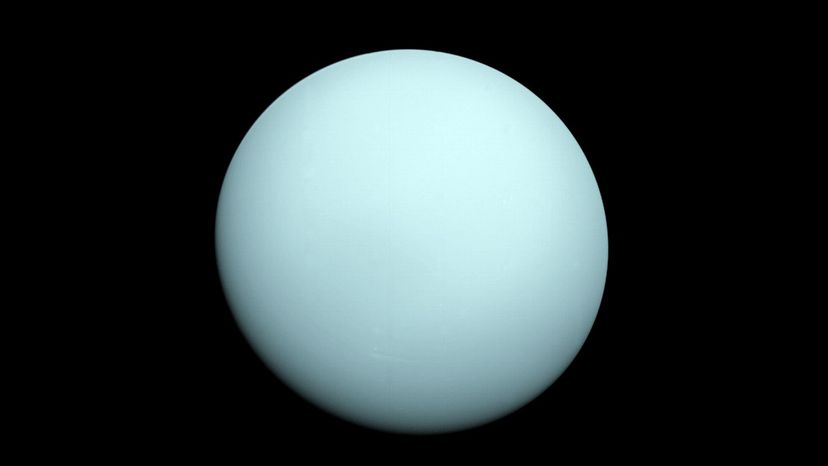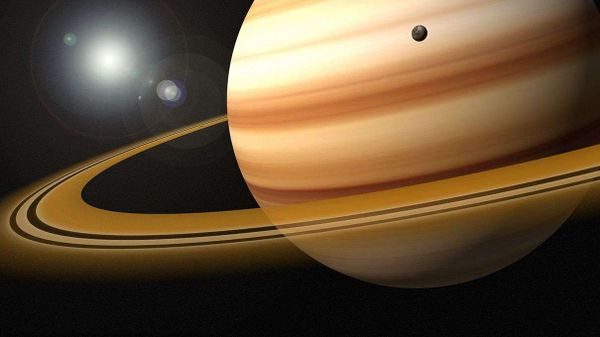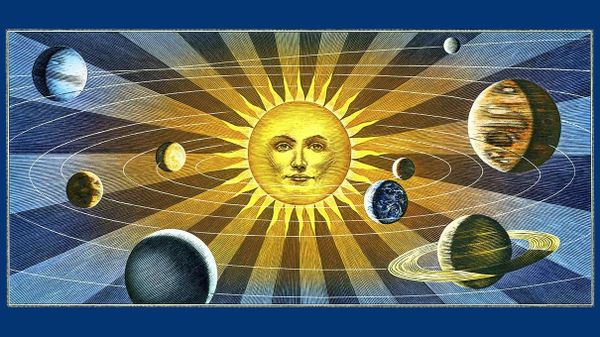
Uranus stinks. And we're not joking.
The enigmatic outer solar system planet has long had a credibility problem, what with it being the butt of countless immature jokes. Now, astronomers have just discovered a gas in Uranus' clouds that does nothing to curtail the giggles. At all.
Advertisement
The study, published in the journal Nature Astronomy, has discovered the chemical signature of hydrogen sulfide, a compound that gives rotten eggs their distinctive stench, in the planet's clouds. Besides launching a thousand new smelly planet puns, this finding could transform our understanding of how our solar system evolved. It also may help us to understand the atmospheres of massive planets orbiting other stars.
First, a bit of background: Uranus has only been visited by a spacecraft once, when NASA's Voyager 2 zipped past the planet in 1986. The flyby produced many beautiful and iconic views of the almost featureless, light-blue world. Astronomers have made countless ground-based observations of Uranus, too, in the hopes of better understanding the composition of its atmosphere. Despite these efforts, however, we know surprisingly little about this enigmatic planet. But the discovery of hydrogen sulfide is a big step forward, and it could only be done using one of the planet's most powerful observatories.
Using the Near-Infrared Integral Field Spectrometer (NIFS) that is attached to the Gemini North telescope in Hawaii, astronomers were able to detect the very slight spectroscopic signature of hydrogen sulfide in the uppermost layers of Uranus' clouds. This whiff of hydrogen sulfide is only the tip of the odoriferous iceberg, however; the presence of this gas is indicative of a huge reservoir below the obscuring cloud deck.
"Only a tiny amount [of hydrogen sulfide] remains above the clouds as a saturated vapour," said co-investigator Leigh Fletcher, of the University of Leicester, U.K., in a Gemini North statement. "And this is why it is so challenging to capture the signatures of ammonia and hydrogen sulfide above cloud decks of Uranus. The superior capabilities of Gemini finally gave us that lucky break."
Astronomers have long argued over whether hydrogen sulfide or ammonia dominate Uranus' clouds. It is well-known that the inner massive planets, Jupiter and Saturn, have atmospheres dominated by ammonia ice, whereas Uranus (and presumably Neptune) do not. It's those very differences in atmospheric compositions that place Jupiter and Saturn in the "gas giant" category and Uranus and Neptune in the "ice giant" category, and these differences reveal an insight as to where the planets formed.
"During our Solar System's formation the balance between nitrogen and sulphur (and hence ammonia and Uranus's newly-detected hydrogen sulfide) was determined by the temperature and location of planet's formation," said Fletcher.
The thought is that early in our solar system's history, the massive planets migrated from where they initially formed, eventually settling into the stable orbits we see them in today. Through the analysis of the chemicals in their clouds, astronomers can now formulate theories as to how far away from the sun these giant worlds formed and where they migrated from. With this information in mind, astronomers can then look to other stars and gain an insight as to how and where giant exoplanets formed.
This is all very interesting, but the biggest question scientists are likely answering right now is: If we could smell Uranus' atmosphere, would it kill us?
"If an unfortunate human were ever to descend through Uranus's clouds, they would be met with very unpleasant and odiferous conditions," said lead author Patrick Irwin, of the University of Oxford, U.K., also in the accompanying release. But it's not the stench that will kill you.
"Suffocation and exposure in the negative 200 degrees Celsius atmosphere made of mostly hydrogen, helium, and methane would take its toll long before the smell," he concluded.
Advertisement

